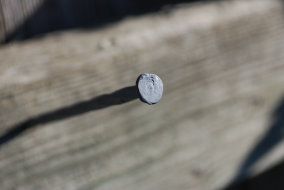Book summary of
Atomic Habits

Success is the result of daily habits, not huge transformations. Small changes in your habits will take you to a much better destination; You get what you repeat! This is a guide on how to build good habits, and break bad ones.
When starting your self-improvement journey, it's best to focus on your day-to-day habits and systems rather than long-term goals. Goals are good for setting a direction, but systems are the way you make progress.
Focus on the person you want to become! Your goal isn't to read a book, it's to become a reader. It's not having something, it's becoming someone. Every action you take is a vote for the person you wish to become.
Habits follow 4 simple steps: cue, craving, response and reward. To successfully build a habit, you need to make the steps actually work:
| Habit Step | How to make it work? |
|---|---|
| Cue | Make it obvious |
| Craving | Make it attractive |
| Response | Make it easy |
| Reward | Make it satisfying |
1. Make it obvious
Every habit starts by noticing cues around you. Here are 3 tips to make your habits obvious:
A- Point out your current habits: To change your habits, you need to be aware of what you are currently doing. For every particular habit you have, ask yourself: "does it help me become the person I wish to be?"
B- Make a specific plan: When starting to create a habit, specify when and where are you going to do it. Example: I will meditate for one minute at 7 AM in my kitchen.
Another way is to stack your habit onto another thing you already do. Example: After I pour my cup of coffee each morning, I will meditate for one minute.
C- Design your environment for success: If you want to make a habit a big part of your life, make it a big part of your environment. To remember practicing your guitar, place it in the middle of your living room.
Habits can be easier to change in a new environment. To develop a new habit, it's easier to go to a new place (like different coffeeshop). To stop a bad habit, escape places or situations that trigger it. "Disciplined" people don't necessarily have more willpower, they just spend less time in tempting situations.
2. Make it attractive
The more attractive an opportunity, the more habit-forming it is. Social media gets you more likes that you could get in real life. Junk food is an exaggerated version of healthy food. Habit-forming behaviors like social media, junk food, drugs and video games are all associated with high levels of dopamine.
Here are 3 tips to make your habits attractive:
A- Bundle your temptations: Link the action you want to do with an action you need to do. You'll find a behavior more attractive if you get to do one of your favorite things at the same time. Examples:
- After I call three clients, I will check ESPN.
- I will check Twitter after I do ten pushups.
B- Get into a group with your desired behavior: We pick up habits from people around us. Surround yourself with people who have the habits you want to have. You'll rise together. Nothing sustains motivation better than belonging to the tribe. When changing your habits means fitting into your tribe, it becomes very attractive.
C- Create a motivation ritual: Do something you enjoy immediately before your desired habit. If you put on your headphones and play music before doing focused work, it will eventually become associated with increased focus.
3. Make it easy
If you want to master a habit, start with repetition not perfection. A photography class was divided into two groups. One is graded on quantity of photos, and the second on quality. At the end of the term, the best photos were produced by the quantity group; They sharpened their skills with repetition. They didn't try to be perfect.
Here are 3 tips to make your habit easy:
A- Start with lowest effort possible: The more energy an action requires, the less likely it is to occur. When you start a new habit, it should take less than two minutes to do.
| ❌ | ✅ |
|---|---|
| Read before bed each night | Read one page before bed each night |
| Study for class | Open my notes. |
Instead of trying to engineer a perfect habit from the start, do the easy thing on a more consistent basis. Then eventually scale it up toward your ultimate goal.
B- Design an environment where it's easy to do the right thing:
Want to draw more? Put drawing tools on the top of your desk.
Want to exercise? Prepare your workout clothes ahead of time.
Watching too much TV? Unplug it after each use.
Addicted to social media? Delete the apps from your phone.
C- Do one-time actions that lock you in: When you remove the mental candy from your environment, it's much easier to do the healthy stuff.
- Delete games from your phone.
- Remove TV from your bedroom.
4. Make it satisfying
We're more likely to repeat satisfying experiences. Toothpaste became a success when they added mint flavor. It provided a "clean mouth" feel. We all want a better future, but at the moment of decision, instant gratification usually wins.
Here are 4 tips to make your habits more satisfying:
- Add instant gratification: Make your early small wins visible. If you want save money, open a new savings account, and add to it every bit you save.
- Use habit tracking: Habit tracking provides a visual proof of your hard work. It's also a satisfying reminder of how far you've come. You wouldn't want to "break the chain!"
- Recover when your habits break: If you miss one day, try to get back as quickly as possible. The problem isn't slipping up; the problem is thinking that if you can't do something perfectly, you shouldn't do it at all. All-or-nothing mentality is a pitfall that destroys your habits.
- Get an accountability partner: Knowing that someone is watching you is a very powerful motivator.


























